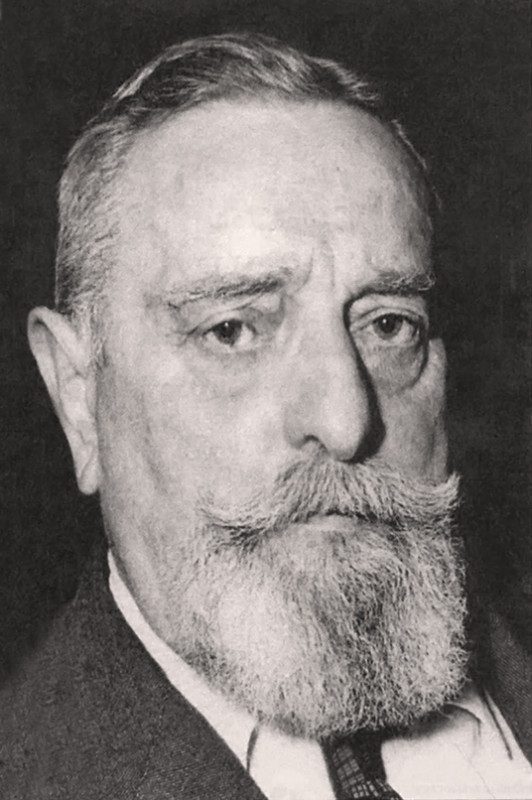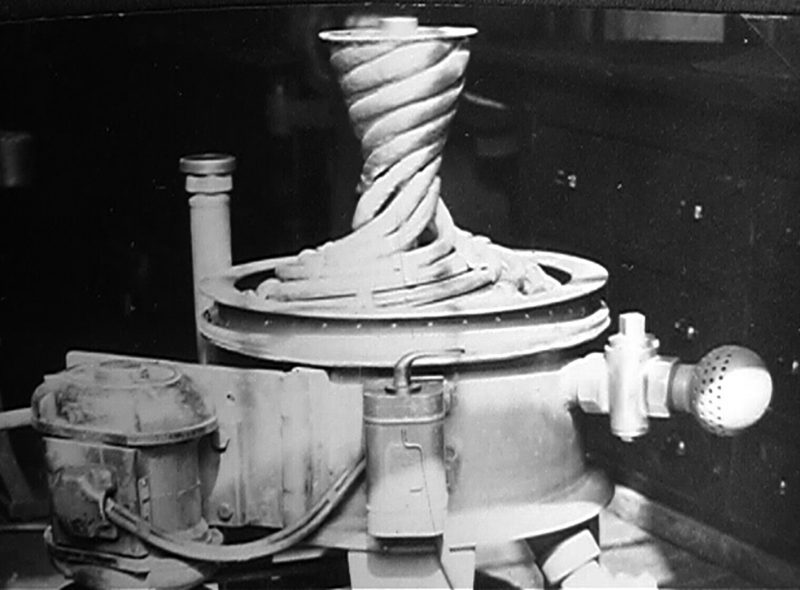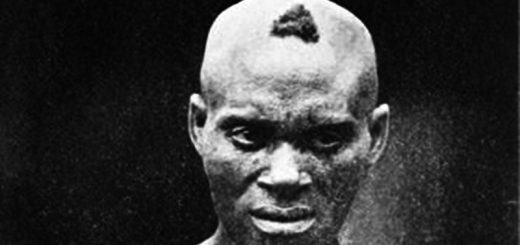‘Free energy’ – a different technology is possible
An infinite, virtually free, and environmentally friendly source of energy… An utopia? According to the conventional laws of physics, it would be. But what if these laws don’t apply under all circumstances? Throughout human history, there have been people who tried to use this natural energy as a mechanical drive. This dream had its renaissance in Vienna, around the turn of the 20th century. Various inventors claimed to have constructed devices, driven by a yet unknown source of energy.

Viktor Schauberger
One of these inventors was Austrian Viktor Schauberger (1875-1958). Born into a family of forest rangers, he developed a great love of nature, and in particular of water. He could sit and daydream for hours next to a brook, without ever getting bored. Apparently he also inherited his sharp sense of intuition from his ancestors. One day, while sitting by a brook, he discovered that he could let his consciousness flow along with the water. His awareness would leave his body and would obtain deep insights. On returning to his body, he could vividly remember all that was revealed.
When his father wanted him to study forestry in Vienna, just like his brothers, Viktor refused adamantly. He didn’t want to lose his intuitive gifts in favor of intellectual stimulation. Instead, he attended the secundary school of forestry, where intellectual pretense played no part, and a lot of time was spent in the woods. World War I cruelly shattered this dream. The young man fought for four long and surreal years as a gunner, at four different battlefronts. His sharp intuition saved his life several times. Nevertheless, a twist of fate dealt him a serious leg wound, just before the end of the war. He limped back home, where his wife and son Walter were waiting for him.
The ‘miracle’ that permanently changed his life, occurred in these pristine forests.
Viktor Schauberger found employment as a forest ranger at the beautiful and vast estate of a German prince, Adolf von Schaumburg-Lippe. The ‘miracle’ that permanently changed his life, occurred in these pristine forests. One cold winter morning, the ranger was ploughing his way through thick snow, following a pheasant to its mating grounds. He encountered an ice-cold, fast flowing mountain brook on his way. As he carefully placed his stick in a shallow place ready to jump, he suddenly saw something shoot away up stream, from the corner of his eye. Feeling intrigued, he paused. After a few minutes the fish—that’s what he had seen—returned. It opened its beak, and remained completely motionless in the wildly swirling water.
“How can this fish remain perfectly still against such a strong current? How did this fish succeed at all in swimming up stream of this high waterfall?”, he wondered. Deeply immersed in thought, he climbed down towards the moonlit pool. The water looking like liquid metal as it crashed into the basin. Countless trout had gathered there, on their way to the mating grounds inside the well. Suddenly a large trout appeared that chased away the others. He started to encircle the jet stream, making oblong motions. Before long it was abruptly lifted out of the water, as if carried by an invisible hand, and disappeared into the center of the jet stream. It jumped elegantly over the top of the cliff the next instant, swung its tail, and was gone… The forestranger was utterly perplexed.
“What power on earth is able to accomplish this?”, he wondered, feeling rather upset. When nothing came to mind, he decided to turn to science for more information. For a while he was to be found regularly at the university’s library. He researched scientific works of all known and lesser-known scientists, but he didn’t find any reference to the ‘trout phenomenon’. Alchemistic works and tales about miraculous cures with magnetically charged water by Anton Mezmer however, did provide him with certain clues. Slowly but surely he became convinced there actually was a hidden, magnetic power inside water, able to suck the fish upwards as if it were a magnet. He started to fantasize about an entirely new technology that would utilize this ‘trout power’.

Log flume Krampen-Neuberg
Breaking the law of Archimedes
The device that instantly put the forest ranger on the map in 1924, was the so-called ‘log flume’—Schauberger’s artificial brook that reduced transportation costs for lumber to one tenth of the original sum. In a totally unique way, he succeeded to float heavy logs, thicker than 2 foot, on a thin layer of ‘imploded’ water, of barely one foot. From his visions he learned that water recharges itself with a natural magnetism through meandering. This magnetic power contracts the water molecules, causing them to densify and have greater carrying power.
Against all expectations the flume was wildly successful, and the engineers didn’t know what to do with Archimedes’ law. According to this law, ‘the law of preservation of energy’, this flume should not have worked the way it did. Unlike the academics, the politicians didn’t hesitate to exploit the forest ranger. During the crisis of 1924, Austria badly needed money. The Prime Minister offered him a position as ‘transportation flume advisor’, at the Ministry of Forestry. The uneducated ranger decided he wasn’t going to sell himself short. He bargained a quadruple advisor’s salary, to be payed in gold. After a quick calculation, the minister conceded. This didn’t go down well with the educated clergy of the Ministry. They were deeply offended. They went on strike. Yet the minister firmly stood his ground, backing the ranger. Finally a lawsuit ended his political career, based on his ‘unlawful’ salary.
The forest ranger couldn’t care less. He swiftly made an arrangement with Vienna’s largest construction company and hence sold his log flumes for commercial prices. The minister was obliged to concede, and for a short while the ranger became a wealthy man. But inflation immediately rendered his fortune worthless. Viktor Schauberger built a total of 14 log flumes, not just in Austria, but also in Bulgaria, Bosnia and Czechoslovakia. How did these flumes function? Even a renowned professor of hydraulic engineering couldn’t figure it out. Ultimately he understood that the ranger instigated a magnetic power within the water, through a certain motion. This magnetism enriches the atomic bond, densifying the water and enhancing its carrying power.
Visiting King Boris

The Bio Plow
In 1929, Viktor Schauberger met with the king of Bulgaria, for whom he was building log flumes. During this conversation, the ranger warned the king of abusing the flumes. Forest clear-cutting, as the ranger stated, would eventually even endanger food production. “The forest is water’s cradle. Forest stands for life, desert mean death”, as the ranger put it concisely. The alarmed king thereupon asked the ranger to investigate the strongly decreased food production in the Northern regions.
He advised the king to experiment with agricultural tools made from non-magnetic copper or bronze.
And indeed it proved to be accurate that agricultural production in the Northern wooded region had decreased significantly, in comparison to the parched Southern regions. His intuition told him this had happened due to agricultural mechanization and replacing traditional wooden ploughs with iron ploughs, pulled by heavy tractors. “Iron is a magnetic metal”, he reasoned, “that discharges the natural magnetic tension of groundwater. Thus, the water can no longer rise up to the very tips of the crops.” He advised the king to experiment with agricultural tools made from non-magnetic copper or bronze. The king judged it impossible to convince his government and advisors of such absurdness. They could very well declare him insane!
Implosion of water
The log flumes were an increasing source of frustration to the ranger, because they didn’t lead to responsible forestry. On the contrary. Once again he returned to the University’s library, determined to solve the riddle of the trout. He read stacks of important scientific documents, from Einstein to Max Planc. By accident he discovered the work of Lennard, a German physicist, who had conducted research into the mystery of ‘waterfall-electricity’.
Together with his friend doctor Winter, Schauberger excitedly copied the Kelvin-generator, that Lennard had mentioned. The result was remarkable. They measured unexpectedly high electrical tensions, and witnessed unfamiliar magnetic light effects. “All one needs to do is guide water into the correct motion!”, the ranger said to Doctor Winter. “A motion that doesn’t follow a straight pathway, but moves in curves! Water needs to meander and swirl. Otherwise it dies, as does its consumer.”
Schauberger noticed significantly high rates of cancer in areas with newly installed iron water pipes.

The inner workings of the spring water device by Viktor Schauberger
Schauberger noticed significantly high rates of cancer in areas with newly installed iron water pipes. To tackle this problem at the root cause, the ranger developed a ‘spring water device’. This device would allow consumers to prepare their own medicinal spring water conveniently at home. As he did with all his inventions, he first observed nature’s way and then copied it in the best possible way. The Spring Water device, was an attempt to imitate the cycle of rainwater inside the soil. Matured and magnetically charged water rises up to the highest mountaintops against all laws of logic, to disperse its growth enhancing magnetic tension to the valleys below, rendering them fertile.
The Spring Water device became a success. All of diseased Vienna lined up at the ranger’s doorstep. In collaboration with several doctors, Schauberger tested people with an incurable sickness and he healed almost every one of them. The doctors were amazed as well as offended. When word went around that the ‘water wizard’ was using mercury in the Spring Water device, the Medical Association sent in the police. Besides the device, they also confiscated some bottles for personal use…
Contours of a new technology
During the early 30’s, the ranger’s insights started to shape into a clear concept, based on nature’s growth power—the natural magnetism of water. The ranger summarized his insights in the booklet ‘Our Senseless Toil – Progress through atom-transformation, not its destruction.’ He suggests that the implosion process could be utilized for driving submarines for instance. The Trout Engine that the ranger designed, worked like a fish with suction power in the front and pressure from behind. The pressure and suction were generated by the implosion and subsequent expansion of flowing water.
Viktor Schauberger put a lot of effort towards drawing the authorities’ attention to his natural techniques. Yet Hitler’s invitation 1934 was rather unexpected. The man with the narrow moustache had read Viktor’s booklet and was thoroughly impressed. During an animated conversation, the ranger tried to convince the new leader to transform Germany into an experimental garden for his natural implosion technique. “Without it, the 1000-year Reich will last another 10 at the most!”
Viktor found his way in and no other than the director of Siemens was assigned to establish a workshop and provide technicians.
“Give this man what he needs to prove himself!” ordered Hitler. “We’ll get rid of the Jewish Death Technology. Germany needs a Germanic superior technology!” The ranger was provided with a laboratory. Within a short period of time he magically produced huge sparks and strange light effects from an ultra large Kelvin-generator, in front of a group of Nazi leaders. The Nazi’s were convinced, even though the accompanying scientists tried to attribute the light effects to ‘insignificant fluorescent effects’. But Viktor found his way in. None other than the director of Siemens was assigned to establish a workshop and provide technicians.
At Siemens the ranger started to build a proto-type of his latest implosion idea: a device for natural heat and cold – the Klimator. This device generated natural radiation through air-implosion that provided either a heating or a cooling effect. When one of the engineers switched on the proto-type during the rangers absence, the device melted down to a puddle of metal, within seconds. According to their calculations, this had to have happened at a temperature of approximately 4000°C. Viktor Schauberger swore to never set foot in a Siemens factory again.
When the Nazi’s annexed Austria in 1938, they conducted an ‘sanitation’ amongst political dissidents and other deranged individuals, by giving them a shot of strychnine. The Engineers Association saw their chances. They lured the ranger under false pretenses to a hospital, where he was detained in the lunacy ward. Due to his own intuition and quick actions of an influential friend, the ranger barely escaped death.
In the Third Reich
At the onset of the war, the army leadership suddenly became interested in the suction screw for submarines. Under the pretext of the draft, the ranger was summoned to build a prototype in a Viennese submarine factory. According to eyewitnesses, the monstrous device detached itself from its heavy chains and anchors and crashed through the rooftop, during a test. The alarmed Gestapo confiscated all debris and designs and declared the project top secret. From now on the ranger was kept under close scrutiny.
Hoping to extort essential details of his implosion technique, the ranger was first employed by the army and later on by the Weapon-SS, in several arms factories. Ultimately he ended up with a team of 6 prisoners from concentration camp Mauthausen, where they worked on the engine of a ‘flying submarine’. The ranger managed to provide successes and stall at the same time. As this was a secret project, he would have been executed with either success or failure. It was a miracle that Schauberger managed to survive without ever giving away crucial details of his designs.
New opportunities after the war
The Americans knew exactly where work on secret weapons was being conducted within the Third Reich. Their storm troops were preceded by especially appointed ‘technical looting troops’. Their task was to capture entire teams and ship them to America. During this ‘Operation Paperclip’, thousands of Nazis were transported to the US, where they continued their work on revolutionary weapons, as if nothing had happened. The Americans didn’t consider Viktor Schauberger to be very promising however, so he was temporarily detained, to keep the Russians from capturing him. After about a year, the ranger ‘purchased’ his own freedom, by promising to cease all work on implosion techniques.
When the ranger was about to mass-produce the copper plough, the alerted artificial fertilizer lobby intervened.
Due to severe famine after the war, Viktor decided to apply his talents to agricultural improvement, and so he dug up his ideas about copper tools. He conducted several tests in 1949, together with students from the Agricultural College in Linz. Even though they didn’t stand up to contemporary scientific norms, the results were encouraging. At first glance, the produce from the copper-farmed fields seemed much healthier. In some cases, the yield was twice as much as from the iron-farmed fields. When the ranger was about to mass-produce the copper plough, the alerted artificial fertilizer lobby intervened. Through intimidation they successfully restrained the ranger.

Home Power Generator by Viktor Schauberger
The ranger was 65 years old by now, and his health was deteriorating. With the remaining time and energy, he wanted to dedicate himself to raising worldwide awareness for the dangers of clear-felling and poisoning the sources of life with completely unnecessary atomic energy. Together with his son Walter, he founded the environmental organization “The Green Front” in 1952. Through the media they exerted political pressure with slogans like: “Send the armies to the Green Front!” The idea was to have the army plant trees in an attempt to combat a mutual enemy: worldwide desertification. In spite of endless promises, no political changes were implemented.
This changed however, when journalist, slash peace activist, Brandstätter published the book ‘Implosion versus explosion’. Through this booklet he propagated Implosion Technique as a viable alternative to atomic energy. Suddenly the ranger was back in the picture. He was overwhelmed by lucrative orders from the International arms industry. Understandably he declined all of them. He did sign a contract with turbine manufacturer Voith, for the exploitation of a Home Power Generator. This device would allow people to generate free energy at home. But before the project could be brought to completion, the ranger was lured to America under false pretenses.
Upon arriving in the US with his son Walter, Viktor Schauberger became convinced that ‘project Implosion’ was in reality an attempt to build the most powerful hydrogen bomb, based on his discoveries. So he refused to divulge his secrets. The Americans only agreed to let him return to his country if he surrendered all his patents to the ‘Implosion-consortium’. A defeated ranger signed, only to die 5 days later in his home.
His son Walter tried to continue his father’s work and provide it with a mathematical foundation. This led to the postulation of his so-called Nature-tone-law. ♦
This is the incredible, yet true story of Viktor Schauberger—an Austrian forest ranger who discovers a new, free energy source in the 1920’s, by quietly observing water in its natural environment. He briefly acquires world fame through his revolutionary inventions. Envious scientists slander his name and try to have him incarcerated. Greedy industrialists attempt to steal his patents. Sly politicians strive to get him to jump onto their bandwagon. Adolf Hitler even dreams of using this Implosion Technology to power his Third Reich. He forces the inventor to develop an engine for a flying saucer at concentration camp Mauthausen.
After the war, the Americans captivate him and force him to build the world’s most powerful hydrogen bomb with his technology. The inventor soon realizes that mankind isn’t ready for his technology, at its current stage of development. He fears his inventions will be abused to help people kill each other even faster and on a larger scale. This could lead humanity further into abysmal economic slavery. Thus he wisely keeps the final secrets to himself. But even so, he presents clear pointers that could lead a morally mature humanity of the future to safely develop this sustainable, natural ‘Implosion Technology’.
One-Eye in the Land of the Blind
The rediscovery of aether
by Reinout Guepin
English, Frontier Publishing
ISBN 9789078070924
Paperback, 440 pages
Reinout Guépin (Netherlands, 1972) came across Viktor Schauberger’s work while studying Biodynamic agriculture. He was instantly captivated by the forest ranger’s agricultural inventions, and started an in-depth personal study into this enigmatic personality. To help spread the legacy of Viktor Schauberger (Austria 1885-1958) in the Netherlands, he established the Foundation for Nature- and Implosion Technologies in 2006, and successfully published the original Dutch version of this book in 2010. This captivating tale, which reads like a fictionalized biography, is his personal attempt to gain a deeper understanding of the inventor in the social-economical settings of his time. It also explores his likely sources of inspiration and provides a summary of what has been delivered to us about his mysterious Implosion devices.
You may also like to read







